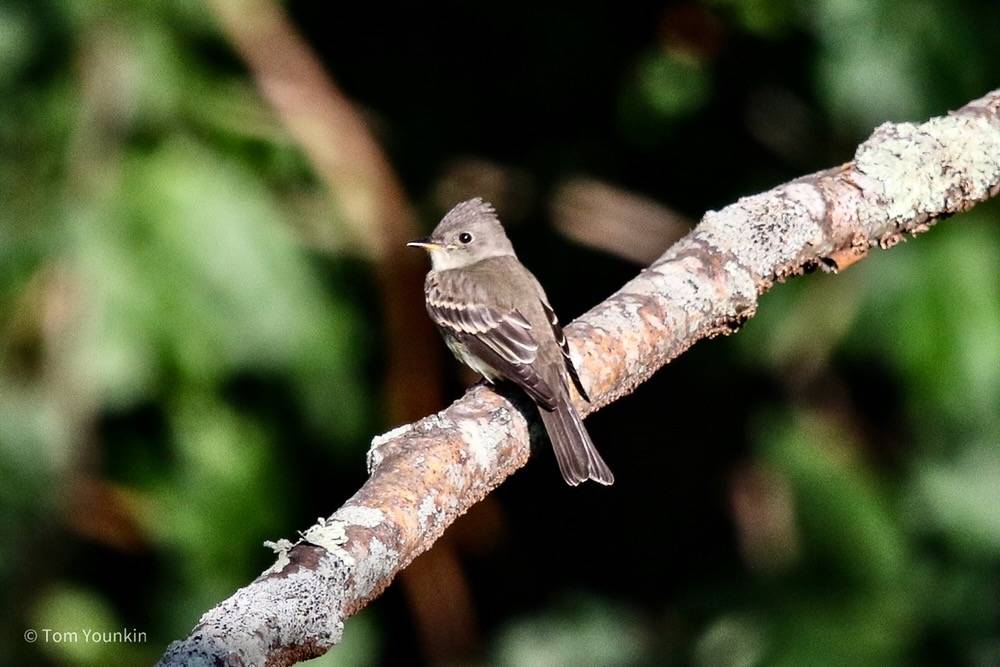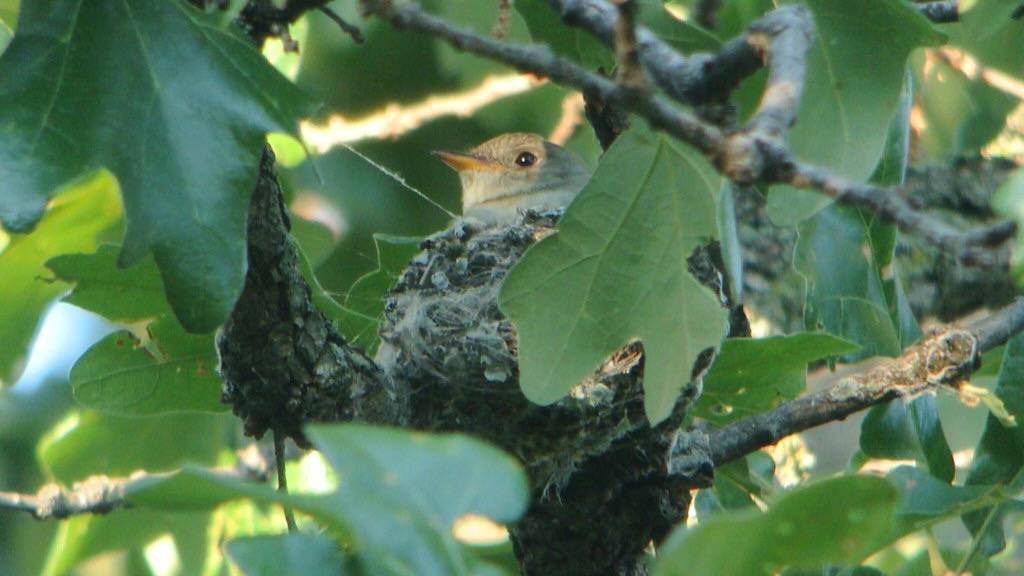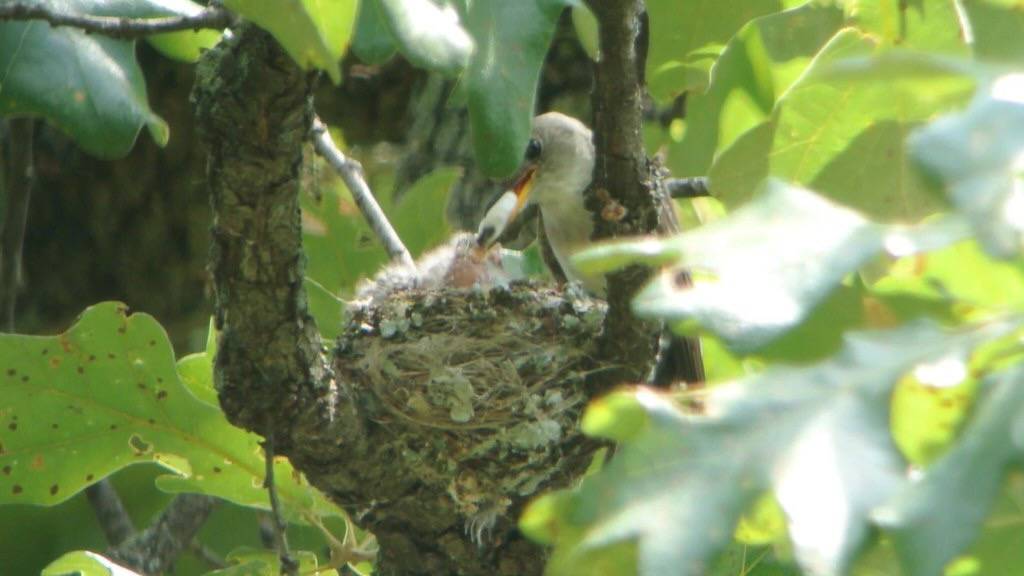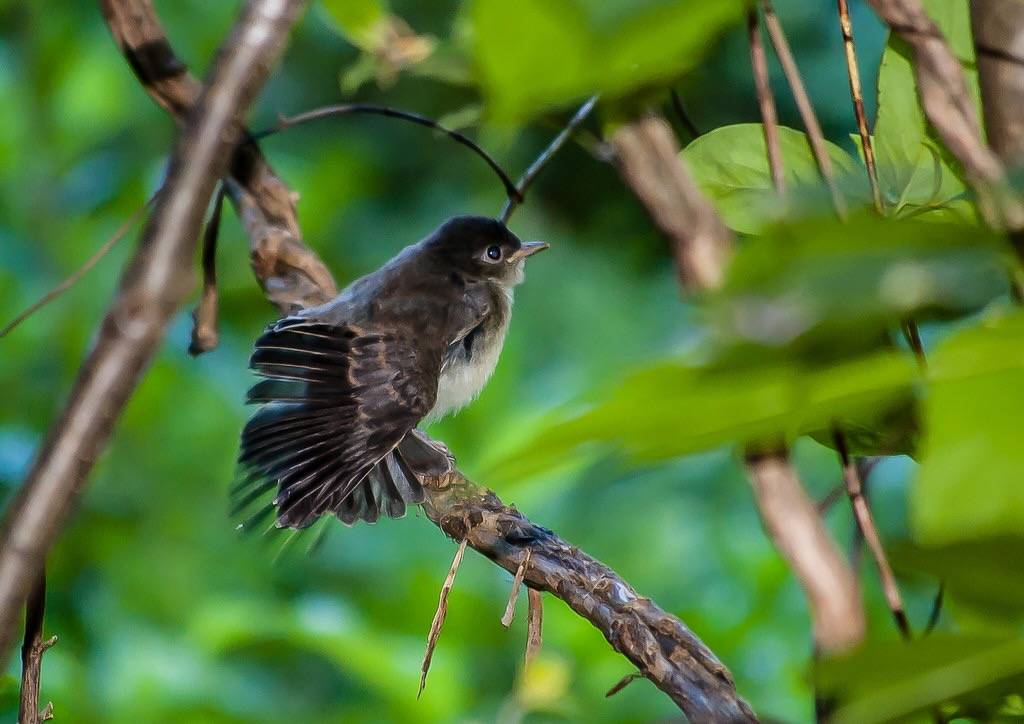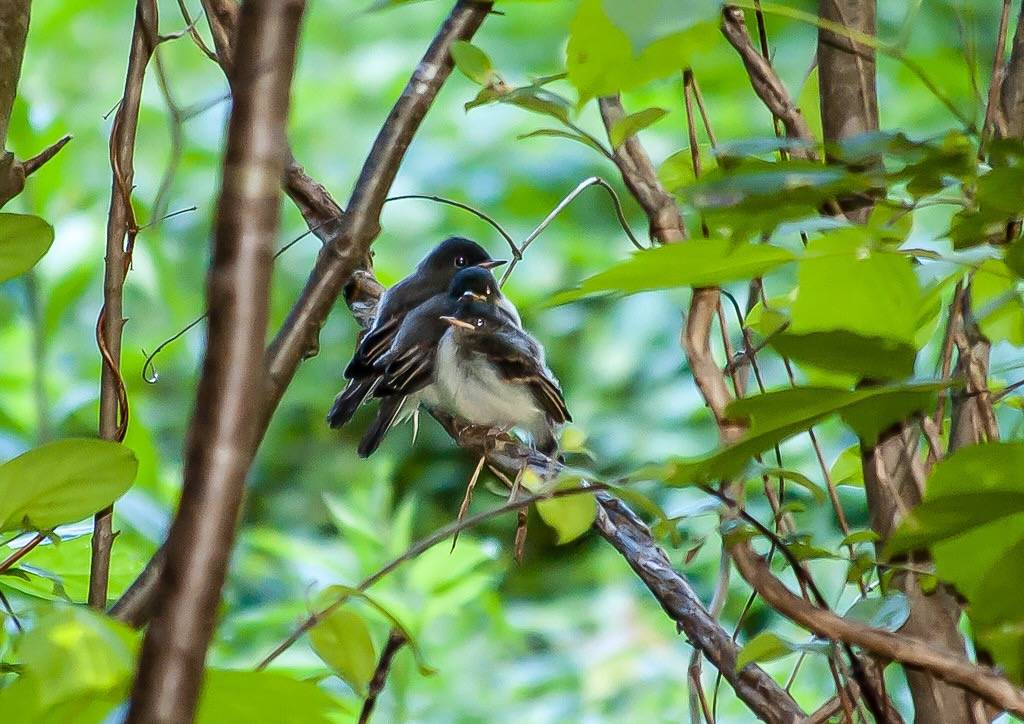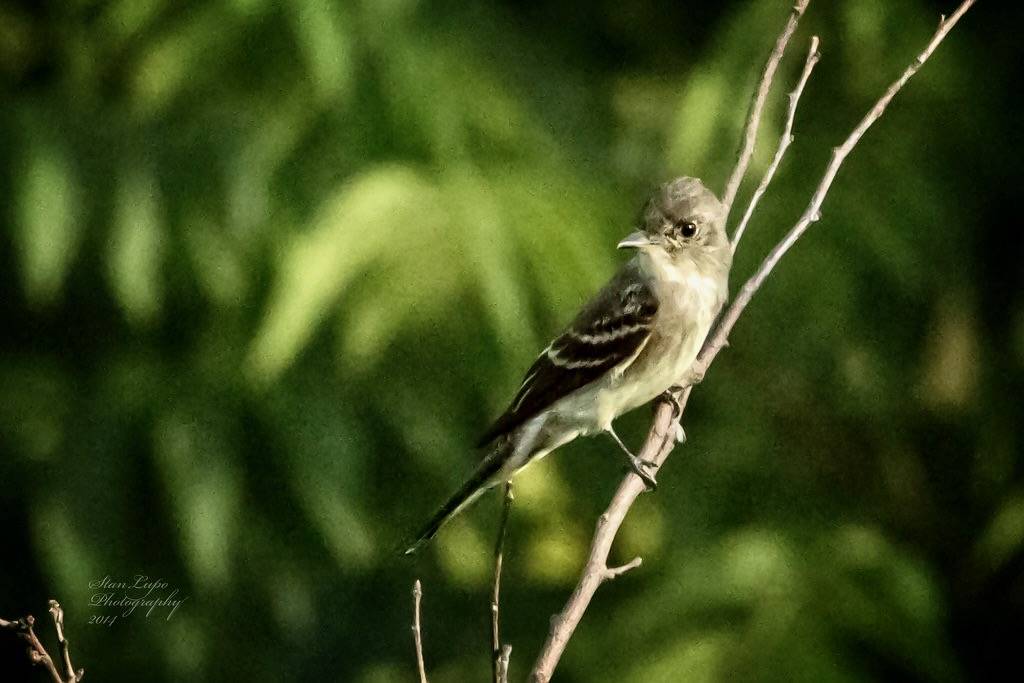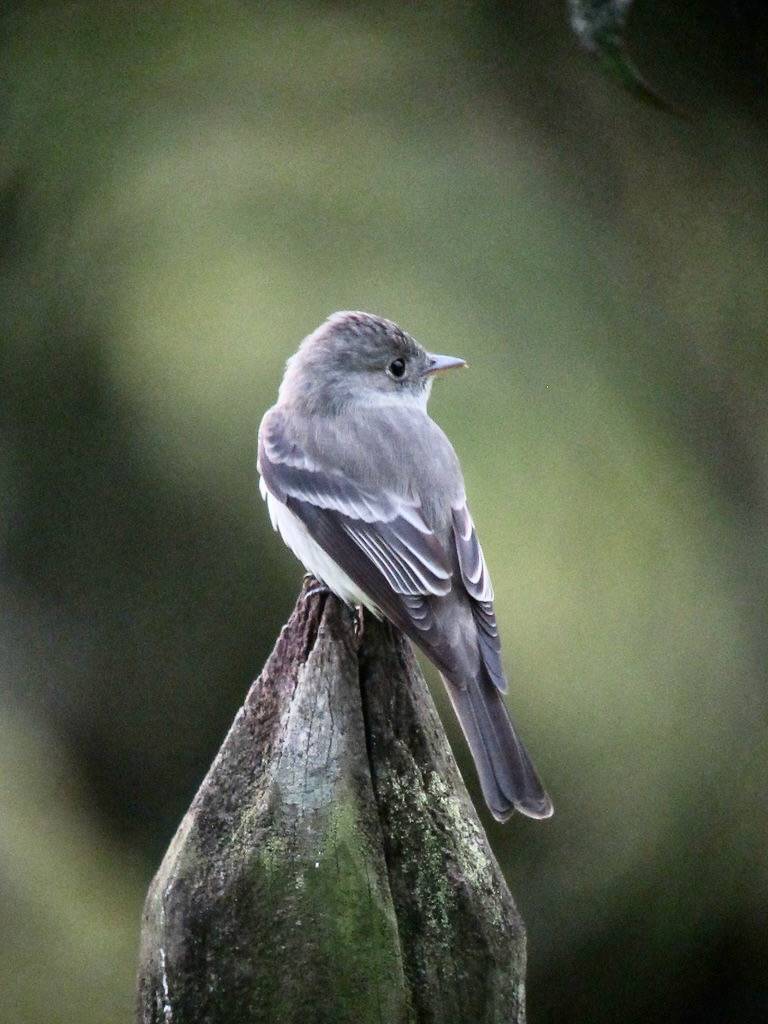Eastern Wood-Pewee
The Eastern Wood-Pewee has been a rare fall migrant at Salter Grove. Given that a male may defend a territory ranging in size from 5-20 acres, the deciduous woodland at Salter Grove would barely be sufficient to support even a single breeding pair.
As is true for most other flycatchers, the Eastern Wood-Pewee is inconspicuous until it flies out from its mid-level leafy perch to catch a passing insect. During the non-breeding season, an average of 36 such sallies has been recorded per hour. Not surprisingly, the feeding rate nearly doubles during the breeding season--up to 68 per hour as birds need the extra protein to produce eggs and feed young.
The Eastern Wood-Pewee might be confused with another visiting flycatcher to the park, the Eastern Phoebe. The Wood-Pewee has strictly gray upper parts with two light gray wingbars and clear white underparts. In contrast, the Eastern Phoebe does not have wingbars and is more brownish gray above, and pale but rather dingy below. Both flycatchers have a bill that is broad at the base but whereas the the Wood-Pewee has a lower bill that is yellowish, the Phoebe has a totally black bill. Additionally, the Phoebe will slowly wag its tail up and down while perched on a low-level branch.
The two flycatchers overlap in a breeding range that extends from southern Canada to the Eastern United States. During the breeding season, the two can be distinguished sight unseen by their respective calls. The Eastern Wood-Pewee sings a plaintive "pee-a-WEEEE", and the Eastern Phoebe belts out a more assertive "FEE-bee."



